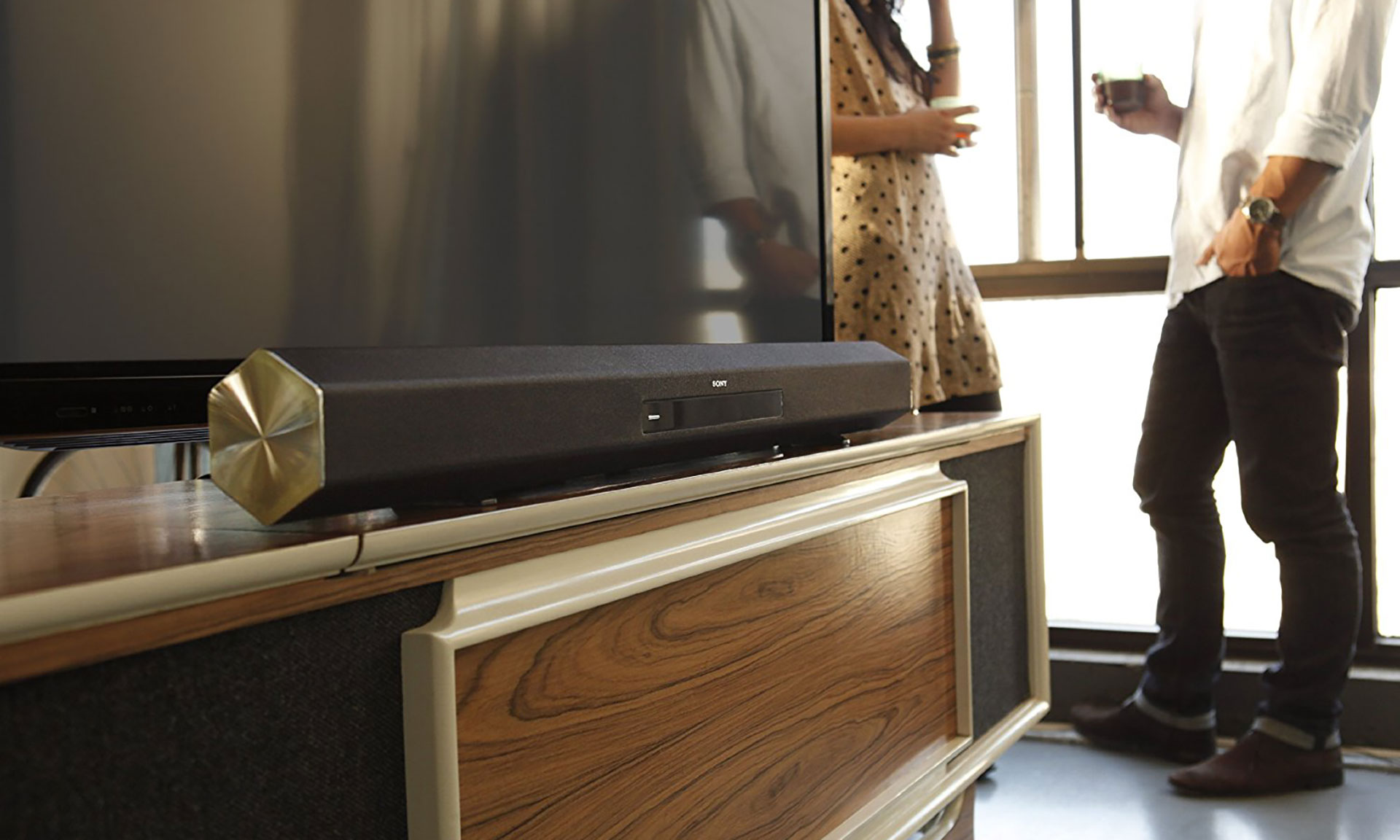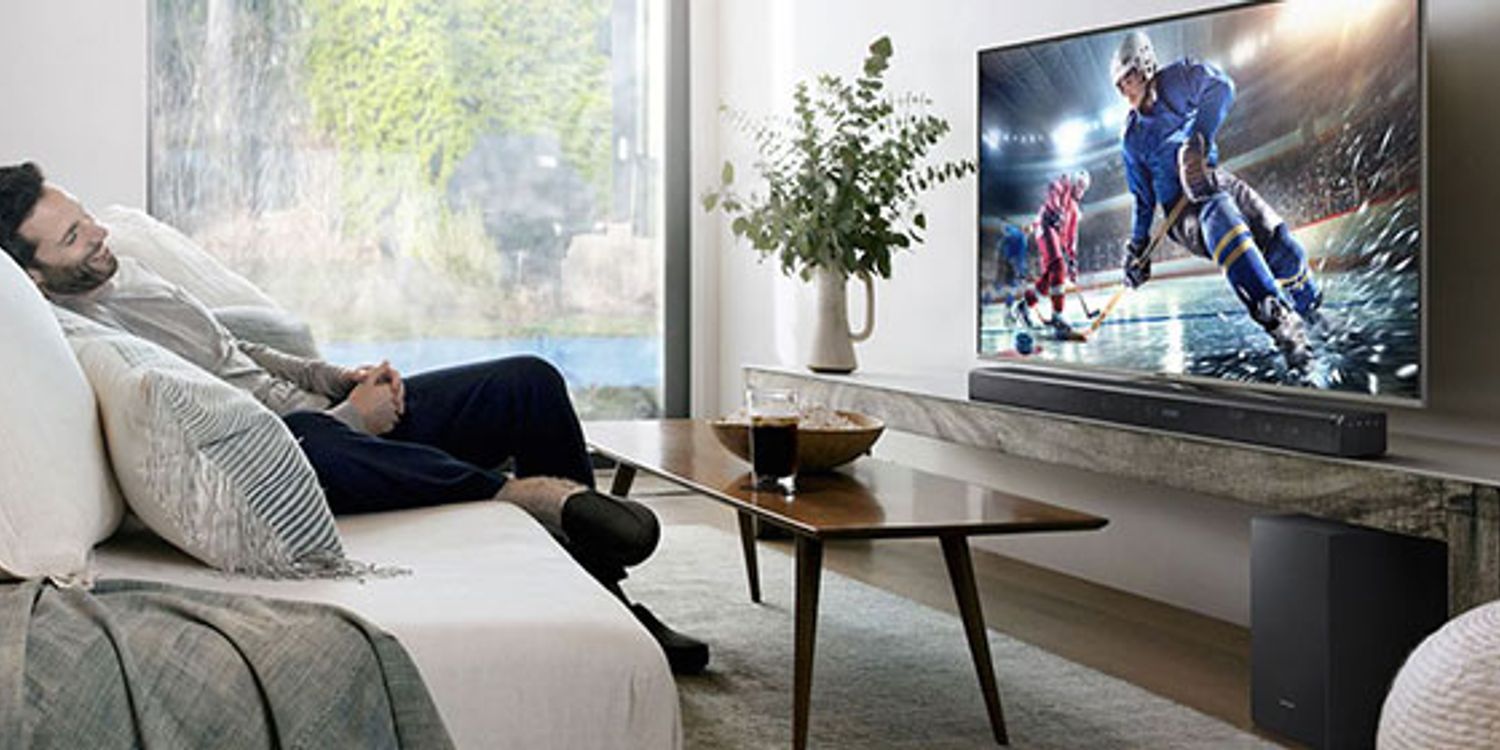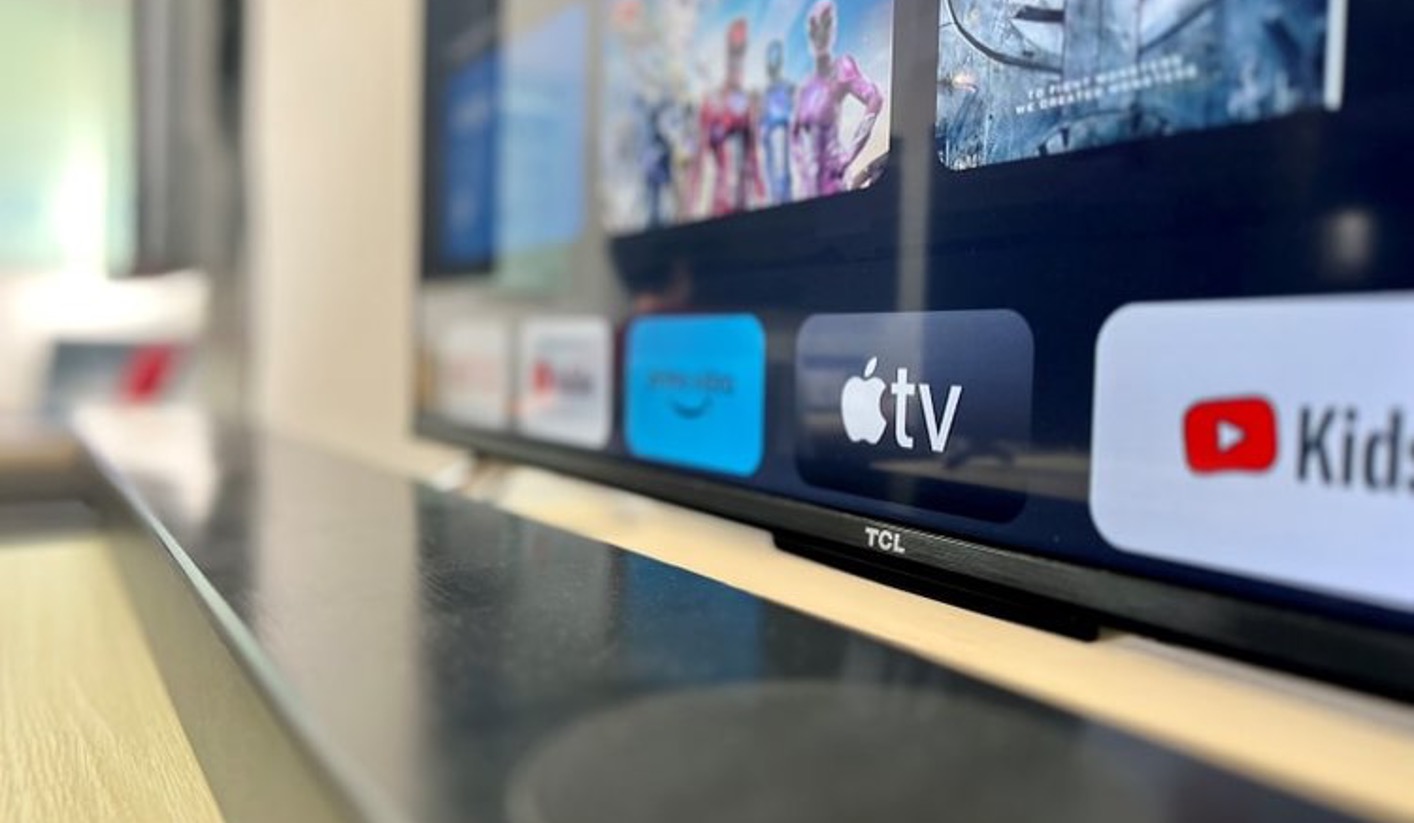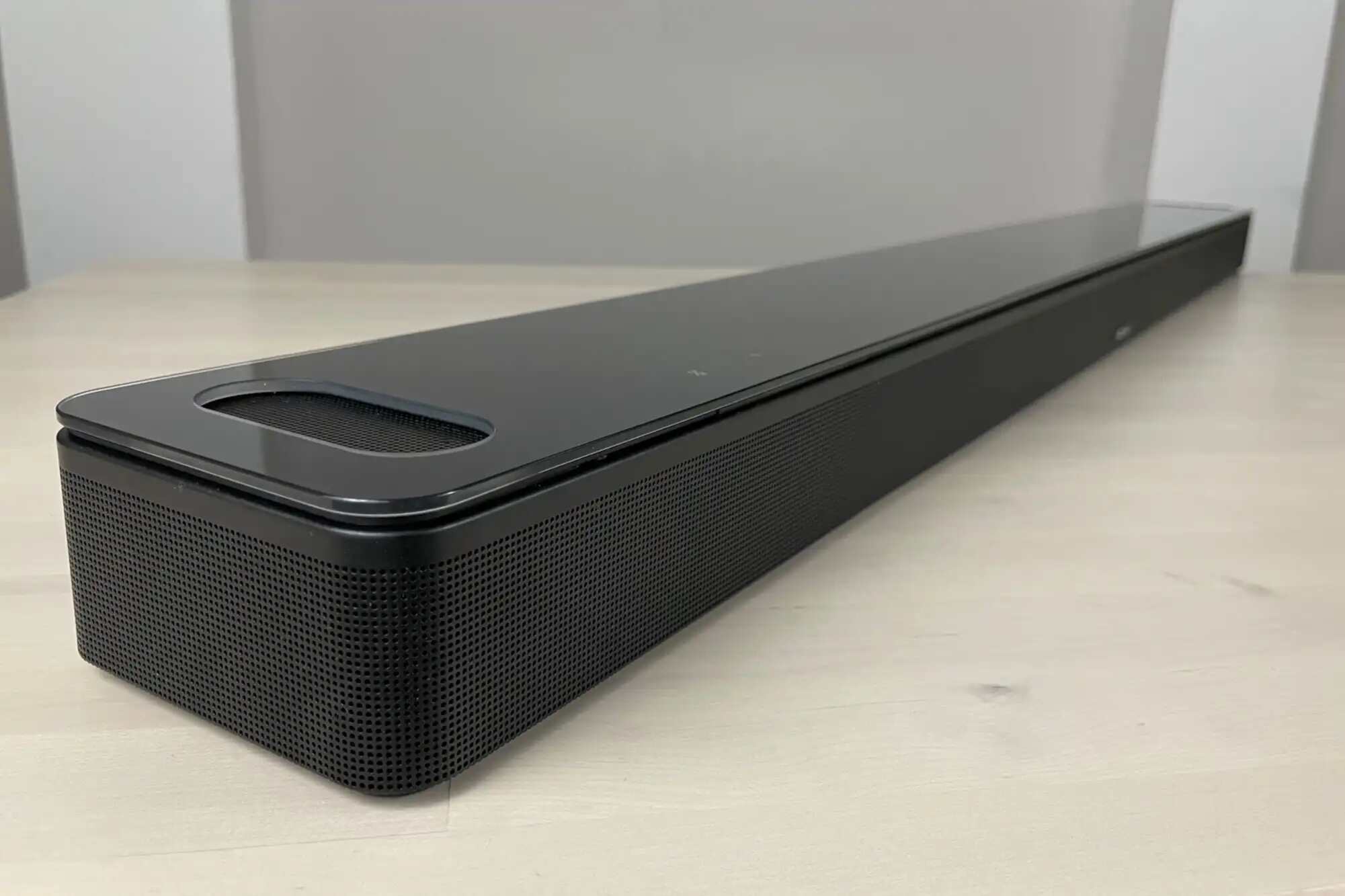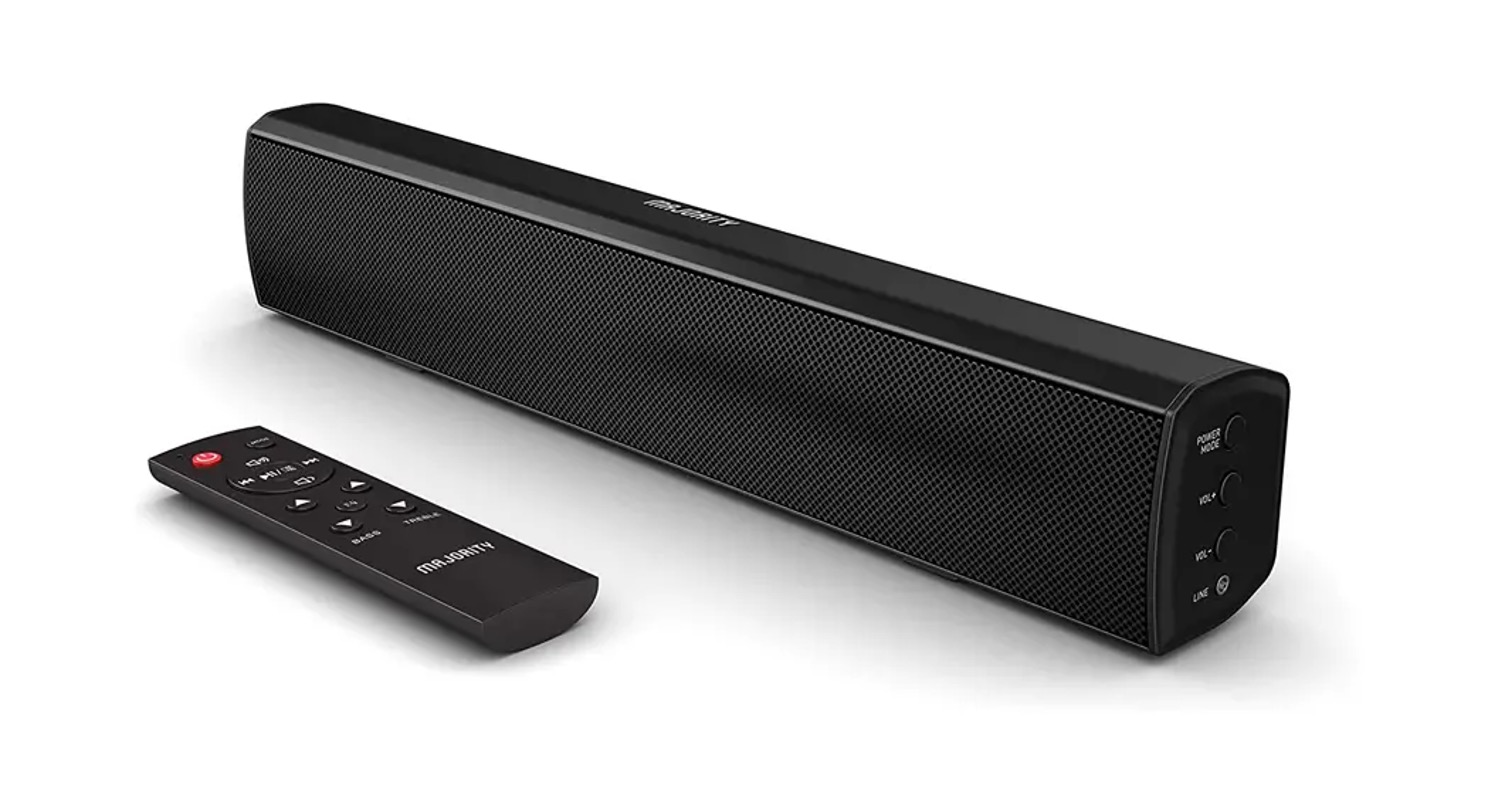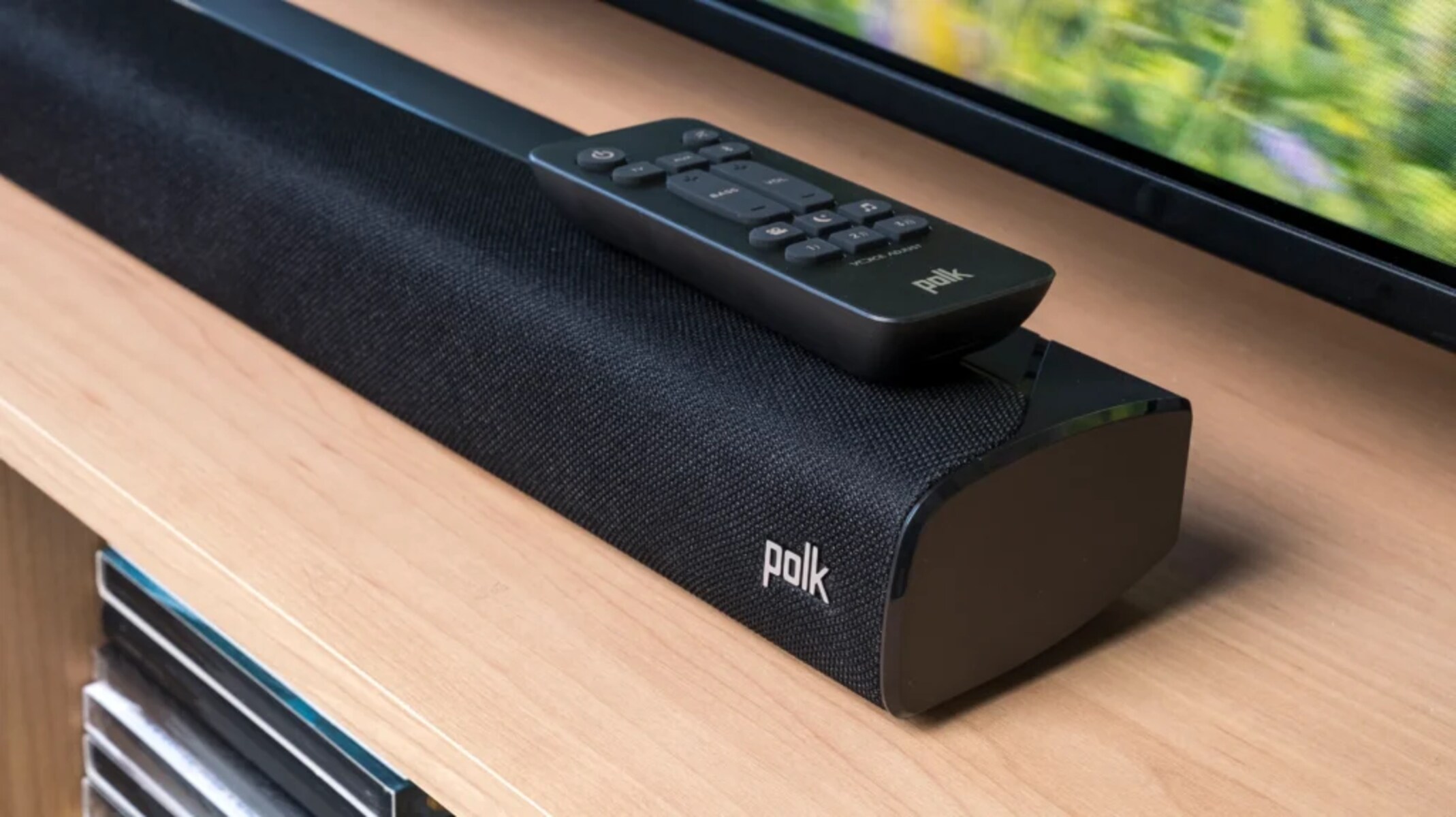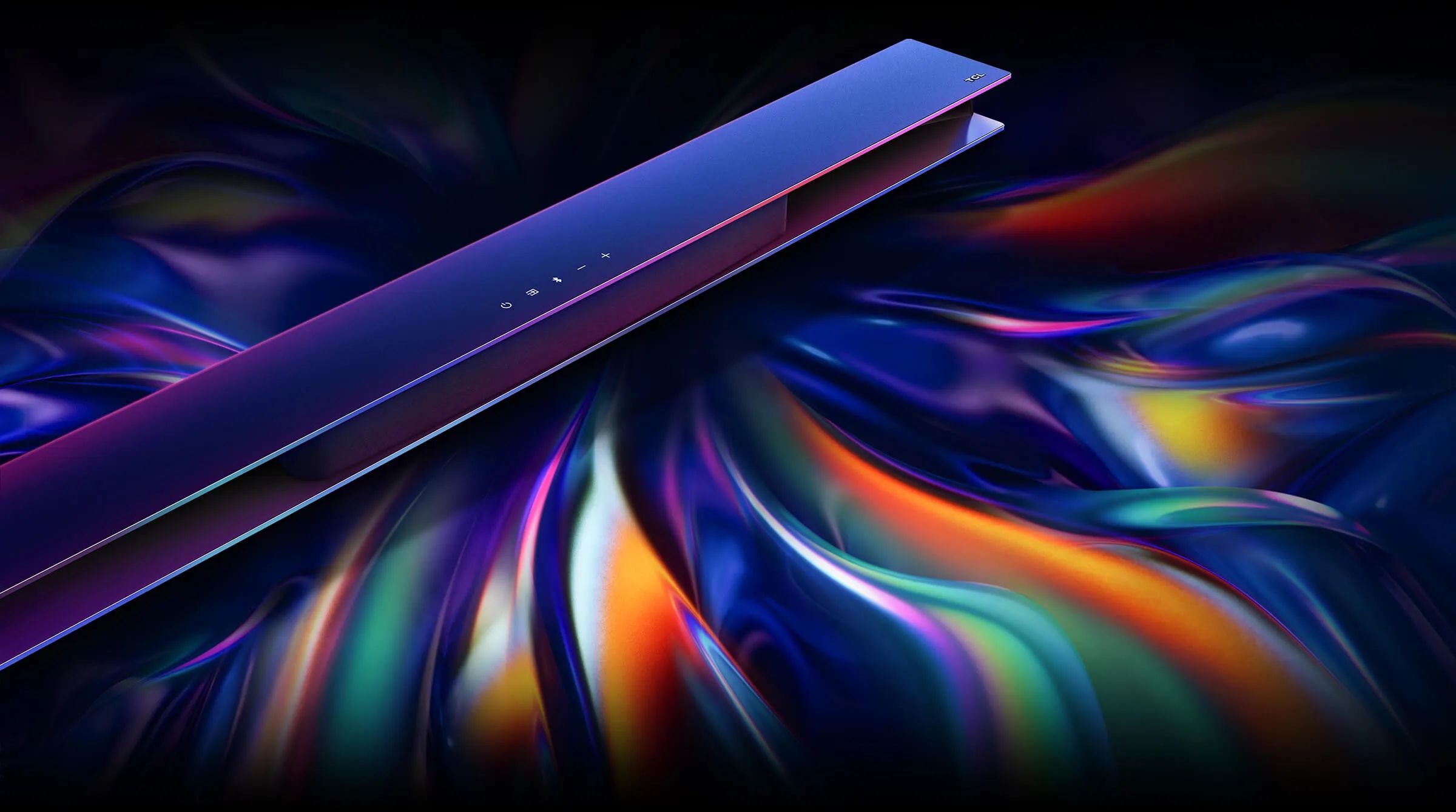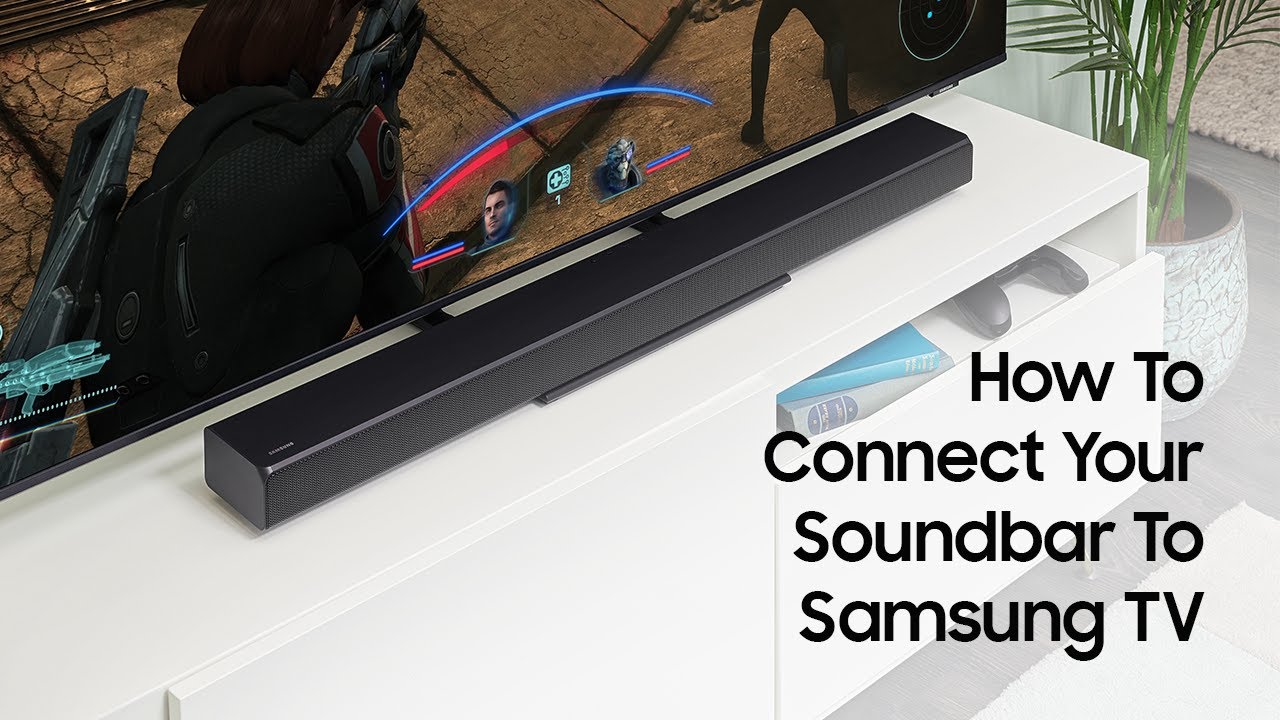Introduction
Welcome to our guide on how to fix delay on a soundbar. Soundbars are a popular choice for enhancing the audio experience when watching movies, playing games, or listening to music. However, one common issue that users may encounter is audio delay, where the sound is not synchronized properly with the visuals on the screen. This delay can be frustrating and impact the overall enjoyment of your entertainment.
In this article, we will explore different methods to resolve audio delay on your soundbar. We will discuss potential causes of the delay, such as incorrect audio settings, connection issues, outdated firmware, or problems with the audio source devices. By understanding the underlying issues, you will be better equipped to address and resolve the delay.
Each method we present will provide step-by-step instructions and troubleshooting tips to help you fix the audio delay issue. Keep in mind that the specific steps may vary depending on the make and model of your soundbar, so refer to the user manual for your device for more detailed instructions. With that said, let’s dive into the various methods you can try to eliminate the delay and enjoy seamless audio playback on your soundbar.
Understanding the Delay on a Soundbar
Before diving into the methods of fixing audio delay on a soundbar, it’s important to understand what causes this issue. Audio delay, also known as audio latency or lip-sync delay, refers to the delay between the audio output and video display on your TV or other devices.
Several factors can contribute to audio delay on a soundbar. One common cause is the processing time required to convert the audio signal from the source device to the soundbar. This delay can occur when watching movies, playing games, or using any application that requires real-time audio feedback.
Another factor that can cause audio delay is the type of connection you’re using between the soundbar and the audio source device. Different connection methods, such as HDMI ARC (Audio Return Channel), optical cable, or Bluetooth, have varying degrees of latency. It’s essential to understand the capabilities and limitations of your chosen connection method to address any delay issues.
Furthermore, delays can also be introduced by issues with the soundbar itself, such as outdated firmware or incorrect audio settings. In some cases, the delay may be specific to certain audio sources or devices, highlighting compatibility issues.
Now that you have a better understanding of what audio delay is and what causes it, you’re ready to explore the various methods to fix this problem. By identifying the root cause of the delay, you can take appropriate steps to resolve the issue and enjoy synchronized audio with your visuals.
Identifying Potential Causes of Delay
When experiencing audio delay on your soundbar, it’s crucial to identify the potential causes to effectively troubleshoot and resolve the issue. Here are some common factors that may contribute to audio delay:
- Connection type: The type of connection between the soundbar and the audio source device can introduce latency. HDMI ARC, optical cable, and Bluetooth connections have different degrees of delay.
- Audio settings: Incorrect audio settings on the soundbar itself or the connected devices can lead to audio delay. Settings such as audio delay or lip-sync adjustments may need to be configured properly.
- Outdated firmware: Soundbars may require firmware updates to optimize performance and address latency issues. Outdated firmware can contribute to audio delay.
- Audio source compatibility: Certain audio sources or devices may be incompatible with the soundbar, resulting in audio delay. Ensure compatibility between devices and consider using recommended audio formats.
- Processing time: Audio conversion and processing take time, especially when using digital signals. This processing time between the audio source device and the soundbar can introduce delay.
By understanding these potential causes, you can narrow down the root of the audio delay issue. Next, we will explore various methods to address these causes and fix the audio delay on your soundbar.
Method 1: Adjusting Audio Delay Settings on the Soundbar
One of the first methods to try in resolving audio delay on your soundbar is to adjust the audio delay settings directly on the soundbar itself. Most soundbars have built-in options to synchronize the audio with the video display. Here’s how you can do it:
- Access the settings menu on your soundbar. This can typically be done using the remote control or by navigating through the soundbar’s physical buttons.
- Look for the “Audio Delay” or “Lip Sync” settings. The name may vary depending on the make and model of your soundbar.
- Adjust the audio delay settings using the provided options. The settings may be in milliseconds or as a numerical value.
- Start with a small adjustment, such as -50ms or +50ms, and test the audio synchronization by playing a video or any audio content with visuals.
- Continue adjusting the audio delay until you achieve a satisfactory synchronization between the audio and video. It may take a few iterations to find the optimal setting for your specific setup.
- Save the settings once you’re satisfied with the audio synchronization.
It’s important to note that the available audio delay settings and their range may vary depending on the soundbar model. Some soundbars may not have this feature. In such cases, proceed to the next method to explore alternative solutions.
By adjusting the audio delay settings on your soundbar, you can manually fine-tune the synchronization between the audio and video. This method often provides immediate results and resolves audio delay issues, ensuring a seamless and immersive audiovisual experience.
Method 2: Using HDMI ARC or Optical Cable Connection
The type of connection between your soundbar and the audio source device can significantly impact audio delay. Two common connection options with minimal latency are HDMI ARC (Audio Return Channel) and optical cable. Here’s how you can use these connections to potentially fix audio delay:
- HDMI ARC Connection:
- Ensure that your TV and soundbar both support HDMI ARC functionality.
- Connect one end of the HDMI cable to the HDMI ARC port on your TV.
- Connect the other end of the HDMI cable to the HDMI ARC port on your soundbar.
- Ensure that HDMI-CEC (Consumer Electronics Control) is enabled on both your TV and soundbar.
- Configure the audio output settings on your TV to use the HDMI ARC connection.
- Optical Cable Connection:
- Locate the optical audio output port on your TV.
- Connect one end of the optical cable to the optical audio output port on your TV.
- Connect the other end of the optical cable to the optical audio input port on your soundbar.
- Configure the audio output settings on your TV to use the optical audio output.
Once you have established the HDMI ARC or optical cable connection, test the audio synchronization by playing a video or audio content. These connections generally have minimal delay, resulting in improved audio-video alignment. If you still experience delay, proceed to the next method for further troubleshooting.
Note that different soundbars and TVs may have different ports and settings. Refer to the user manuals of your devices for specific instructions related to HDMI ARC or optical cable connections.
By utilizing the HDMI ARC or optical cable connection, you can potentially reduce audio delay and achieve synchronized audio and video playback on your soundbar.
Method 3: Updating Soundbar Firmware
Outdated firmware on your soundbar can contribute to audio delay and other performance issues. Manufacturers often release firmware updates to address such issues and improve the overall functionality of the soundbar. Here’s how you can update the firmware on your soundbar:
- Visit the official website of the soundbar manufacturer.
- Look for the “Support” or “Downloads” section of the website.
- Search for your specific soundbar model and locate the firmware update files.
- Download the latest firmware update files onto a USB flash drive.
- Connect the USB flash drive to the corresponding port on the soundbar.
- Refer to the soundbar’s user manual for the exact steps to initiate the firmware update process.
- Follow the on-screen prompts or instructions provided by the soundbar to complete the firmware update.
- Once the update is complete, restart the soundbar and test for any improvements in audio delay.
It’s crucial to follow the manufacturer’s instructions and ensure that the firmware update is compatible with your specific soundbar model to avoid any potential issues. In case your soundbar has an automatic update feature, make sure it is enabled to receive the latest firmware updates automatically.
Regularly checking for and updating the firmware on your soundbar can help address any known audio delay issues and improve its overall performance.
Method 4: Restarting the Soundbar and Audio Source
Restarting both the soundbar and the audio source devices can sometimes resolve audio delay issues caused by temporary glitches or conflicts. This method is quick and easy to implement. Follow these steps to restart your soundbar and audio source:
- Turn off your soundbar and audio source device, such as your TV, gaming console, or streaming device.
- Unplug the power cords of both the soundbar and the audio source device from the electrical outlet.
- Wait for about 30 seconds to allow any residual power to dissipate.
- Plug the power cords back into the electrical outlet.
- Turn on your audio source device first, such as your TV.
- Allow your audio source device to fully power up.
- Next, turn on your soundbar and let it boot up completely.
- Play a video or audio content to check if the audio delay issue has been resolved.
Restarting both the soundbar and the audio source devices can help refresh the system and clear any temporary issues that could be causing the audio delay. In some cases, a simple restart can effectively fix the synchronization problem, providing you with a seamless audiovisual experience.
If the audio delay persists, proceed to the next method to further troubleshoot the issue.
Method 5: Troubleshooting Audio Source Devices
When encountering audio delay on your soundbar, it’s essential to investigate the audio source devices that are connected to it. Issues with these devices can contribute to audio synchronization problems. Here are some troubleshooting steps to help resolve audio delay related to the audio source devices:
- Ensure that your audio source device, such as a TV, gaming console, or streaming device, is running the latest firmware or software updates. Check the manufacturer’s website or the device’s settings menu for available updates.
- Verify that the audio output settings on your audio source device are correctly configured to match the capabilities of your soundbar. Select the appropriate audio output format, such as PCM, Dolby Digital, or DTS, based on your soundbar’s supported formats.
- Try connecting the audio source device directly to the soundbar using different cables or connection methods. This can help determine if the delay is specific to a particular connection.
- Test audio playback on different audio source devices to see if the delay persists. This can help identify if the delay is specific to a particular device or if it’s a general issue with the soundbar.
- Check for any audio settings on the audio source device that may affect the audio delay, such as audio synchronization settings or audio delay adjustments.
- If possible, try using a different audio source device to see if the audio delay issue persists. This will help isolate whether the problem lies with the original device or the soundbar.
By troubleshooting the audio source devices, you can identify and address any specific problems that may be causing the audio delay. It’s important to experiment with different settings and connections to determine the best configuration for smooth audio playback on your soundbar.
If the audio delay problem persists, proceed to the next method for further troubleshooting steps.
Method 6: Resetting the Soundbar to Factory Settings
If you’ve tried all the previous methods and are still experiencing audio delay on your soundbar, resetting it to factory settings may help resolve the issue. Resetting the soundbar will revert all settings back to their original state and can often eliminate any configuration conflicts or software-related problems. Follow these steps to reset your soundbar:
- Locate the reset button on your soundbar. This button is typically found on the back or bottom of the device.
- Using a small pin or paperclip, press and hold down the reset button for about 10 seconds.
- Release the reset button once you see indicators, such as lights or the display screen, showing that the soundbar has entered reset mode.
- Follow any on-screen prompts or instructions on your soundbar to complete the reset process. This may involve confirming the reset or navigating through a menu.
- Once the reset is complete, your soundbar will restart and be restored to its original factory settings.
- Reconfigure any necessary settings, such as audio input, audio output, or network connectivity, based on your specific requirements.
- Test the soundbar for audio delay by playing a video or audio content.
Resetting the soundbar to factory settings can often eliminate any software or configuration issues that might be causing the audio delay. Keep in mind that this process will remove any personalized settings or customizations you had made, so make sure to take note of your preferred settings before proceeding with the reset.
If the audio delay problem persists even after resetting the soundbar, it is recommended to reach out to the manufacturer’s customer support for further assistance.
Conclusion
Dealing with audio delay on a soundbar can be frustrating, but with the right troubleshooting methods, you can enjoy synchronized audio and video playback. In this guide, we explored various methods to fix audio delay on a soundbar, including adjusting audio delay settings, using HDMI ARC or optical cable connections, updating soundbar firmware, restarting the soundbar and audio source, troubleshooting audio source devices, and resetting the soundbar to factory settings.
By understanding the potential causes of audio delay and following these methods, you can effectively troubleshoot and resolve the issue. It’s important to keep in mind that specific steps and options may vary depending on the make and model of your soundbar, so refer to the user manual for more detailed instructions.
If you’ve tried all the methods but are still experiencing audio delay, it may be helpful to contact the manufacturer’s customer support for further assistance and troubleshooting. They can provide more specific guidance based on your soundbar’s specifications and help you address the issue.
Remember, troubleshooting audio delay may require a combination of methods and patience. By being observant, flexible, and willing to try different approaches, you can improve the audio synchronization on your soundbar and enhance your overall entertainment experience.







